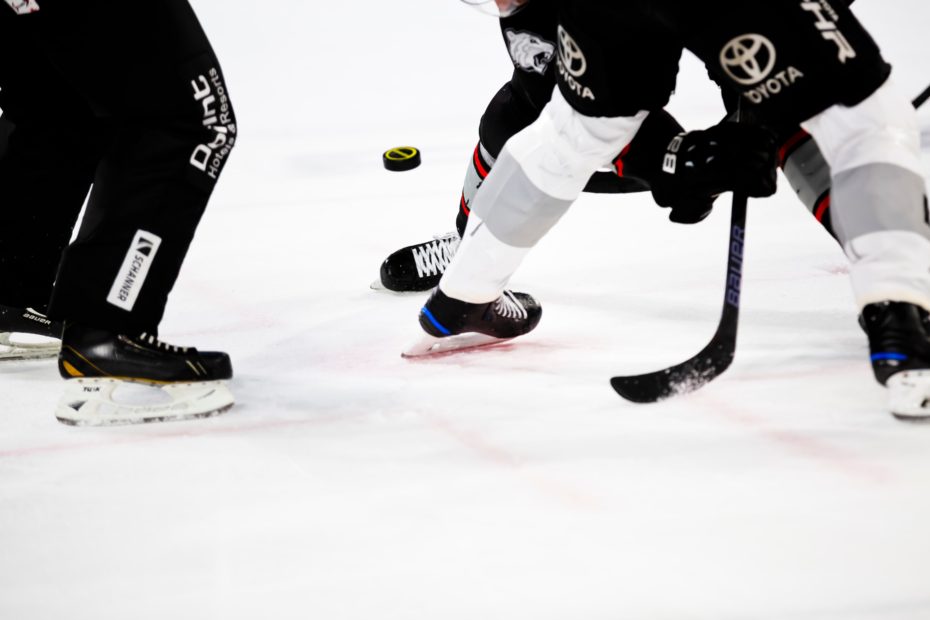Professional ice hockey defenseman David Savard of the Columbus Blue Jackets recently underwent surgery for a bone found floating in his foot. It was reported that Savard had Sesamoiditis, a type of injury that affects the plantar foot.
Bones connected to the tendons or embedded in muscles are called sesamoids. These bones assist in weight bearing activities. Sesamoids can break become irritated and inflamed. This kind of injury is called sesamoiditis and is common among ballet dancers, professional athletes, and runners since it involves pushing off the toes.
Consult a podiatrist for any signs of foot pain. Dr. Howard Schultheiss is a podiatrist who specializes in helping people with foot pain and other types of foot conditions. We find that many of our patients have never even heard of sesamoiditis. Below are some questions and answers about this not uncommon condition.
What are sesamoids?
Sesamoids are tiny bones that are not connected to other bones. They are connected just to tendons or are embedded in the muscles. This structure is only found in a few places in the human body, one of them being the bottom of your feet. Two sesamoids (about the size of a corn kernel) are located on either side of the big toe at its base.
How do the sesamoids work?
These little bones perform a big job: they help the big toe by providing leverage for pushing off and they also aid in weight bearing for the body. Sesamoids function by providing a smooth surface for the tendons to glide over—kind of like a pulley system.
What is sesamoiditis?
When the tendons surrounding the sesamoids become irritated, an inflammatory response occurs. This is known as sesamoiditis. It’s a specific kind of tendonitis.
What would make me prone to sesamoiditis?
This condition occurs as a result of repeated and excessive pressure on the ball of the foot. Some structural issues, such as flat feet, exert pressure on the forefoot, increasing the risk for sesamoid irritation. Wearing high heels for extended periods of time can have a similar affect. People who regularly engage in activities that feature pounding of the forefoot, such as basketball players, dancers, golfers, catchers and runners are particularly prone to sesamoid issues.
Can you describe the symptoms?
The most noticeable sign of sesamoiditis is pain in the ball of your foot or under your big toe. You may also notice swelling or bruising on the bottom of your foot and you might find it hard to bend and straighten the affected toe.
How will the podiatrist know if I have sesamoiditis?
Our foot doctors, Dr. Howard L. Schultheiss, Jr. or Dr. Scott Reich will examine your big toe and test its range of motion. The podiatrist may look at the wear patterns of your shoes and how you walk. X-rays or other imaging studies may also be ordered to confirm the diagnosis.
What are some of the symptoms of sesamoiditis?
The symptoms of sesamoiditis gradually show up and slowly increase in intensity over time.
- When bending or straightening the big toe, pain and difficulty can be felt.
- Activities like running or jumping can intensify pain
- The movement of big toe is limited
- The big toe area is swelling and bruising
- Pain is gone while resting
- Pain while walking especially on the ball of the foot
- Tenderness when pressure is applied
Causes of sesamoiditis
Sesamoiditis is commonly caused by excessive and repetitive pressure on the foot and the surrounding tissues. This causes it to become irritated and inflamed. Any kind of activity that involves placing constant force on the ball of the foot can cause sesamoiditis. Stress fractures are also a common cause of sesamoiditis. Research shows that a person with a bony foot is more prone to this type of injury.
Treatment for sesamoiditis
Here are a few recommended conservative ways to treat sesamoiditis – Always check with your Podiatrist first:
- Stop any kind of activity that causes pain
- Using an over the counter painkillers will relieve the pain
- Resting and applying ice on the sole of the injured foot for about 15 minutes every 2 to 3 hours can stop the pain
- Wearing low heeled soft sole shoes can help your feet to feel relaxed
- Alleviate the stress by using a felt cushioning pads
- Slowly return to the activity but continue wearing the cushioning pad to provide proper support
- Tape the big toe downwards
- Your doctor might recommend steroids to reduce inflammation and swelling
- Wearing a removable fracture brace for a month can help relieve the pain
There are a number of non-invasive treatments. First, you will need to rest from any activities that irritate the sesamoids. To give you relief from the pain and inflammation, the foot doctor may recommend a nonsteroidal anti-inflammatory medication or steroid injections to the affected area. Icing can also help with pain and swelling. Physical therapy, padding or custom orthotics to protect the sesamoid area and choosing shoes with low heels and soft soles may also be recommended.
Some tips for prevention of sesamoiditis
- Do not walk in barefoot
- Wear a supportive and cushioned footwear
- Stretching can help prevent sesamoiditis
- Follow safety rules and wear protective equipment all the time
At Harford Lower Extremities Specialists located in Bel Air, MD, we specialize in helping people from foot problems. To schedule an appointment call (410) 836-0131.

